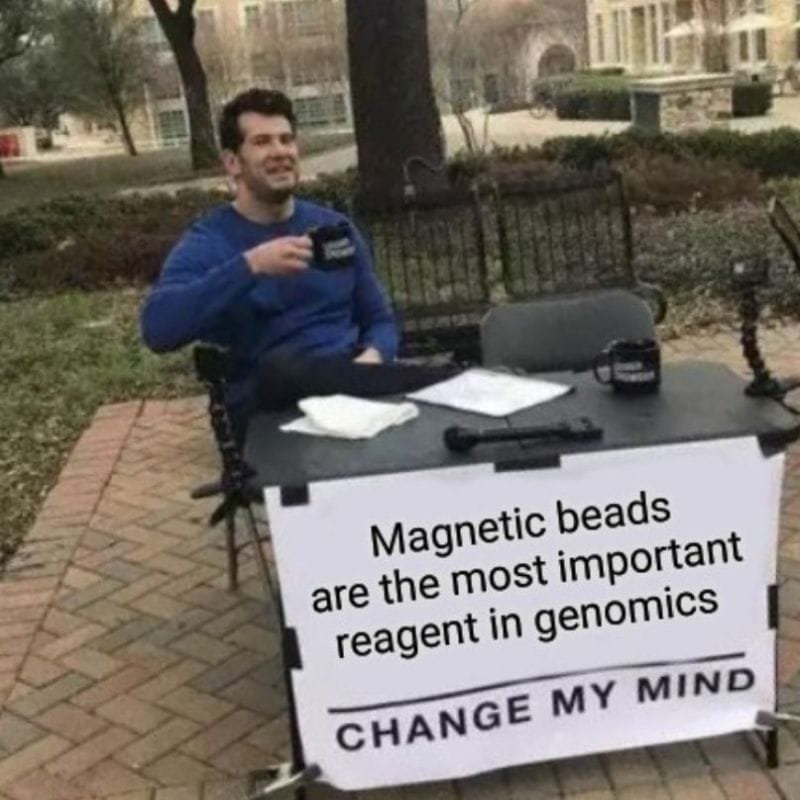Why magnetic beads are the most important reagent in genomics
Magnetic beads don't get much respect in the sequencing world, but they're hella useful. Here are some applications you should try!

But first, how do magnetic beads actually work?
The beads themselves are polystyrene spheres that have been coated with iron to make them superparamagnetic.
This is just a fancy term for 'they're very attracted to magnets.'
And because they're attracted to magnets, it makes them the perfect solution for high throughput isolation of biomolecules!
These iron beads can be functionalized in different ways, for example, they can be coated to bind proteins, or biotin, or even nucleic acids.
This versatility is what makes them so useful for molecular manipulation!
Nucleic Acid Extraction: Beads are functionalized with carboxyl groups which allow them to bind to salt precipitated nucleic acid. This binding is aided by a 'crowding agent' like polyethylene glycol (PEG) which forces the DNA/RNA to get up close and personal with the beads! This is basically the go-to process for anyone that wants to do high throughput nucleic acid extraction. It's also a very gentle extraction method, unlike filter based plates or columns that shear DNA/RNA, beads can yield 60kb lengths which is perfect for longer read sequencing applications.
DNA Size Selection: But wait, there's more! You can also use these beads in a similar fashion to do DNA size selection. Fragment insert size length is important for short-read sequencing and depending on your read length you might want to shoot for anywhere between 75bp to 400bp fragment sizes. Historically this was done using gel size selection or sonication, but beads can also be used to select size ranges of fragments by adjusting the concentration of the crowding agent! Essentially, the more crowding agent you include, the smaller the fragments you retain.
Nucleic Acid Normalization: Alternatively, the beads themselves have a specific binding capacity based on their size, salt concentration and PEG ratio. Because of this, these beads can be used to bind a specific amount of nucleic acid for downstream applications without having to worry about quantifying how much is there before moving on to the next step!
Target Capture: Beads can be coated with streptavidin which is a protein that binds very tightly to biotin. This affinity has been co-opted for target capture applications. Nucleic acid probes 5' labeled with biotin are incubated with a DNA sample to bind to their targets, exposed to streptavidin covered magnetic beads, and then washed to isolate the captured target from the bulk sample.
Immunoprecipitation: Yet another big word but it just means 'to use an antibody to isolate something!' Magnetic beads can be functionalized to bind antibodies. These can then magnetically isolate specific cells from a sample, proteins bound to DNA fragments, or fish out any affinity interaction you desire.
Respect the power of the bead 💪!
